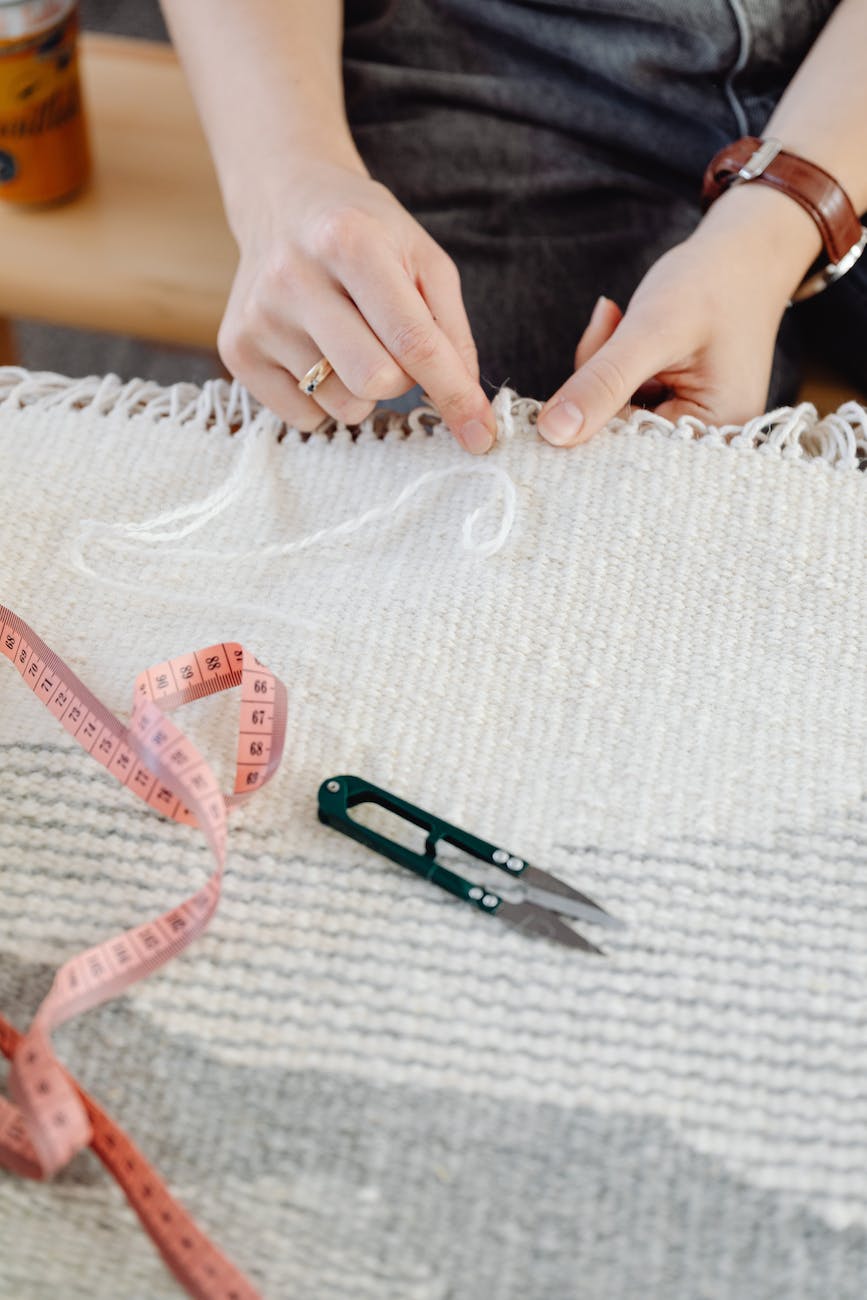The Art of Rug Making Restoration: Nurturing Vintage Masterpieces
Over decades, handknotted heirloom rugs accumulate stains, soiling, and wear. But in the skilled hands of rug conservationists, new life awakens in faded antiques through specialized cleaning, recoloring, and repair techniques. Like master horticulturists cultivating vintage gardens, rug restoration artisans lovingly rehabilitate unraveling areas, dull colors, and sensitive fibers under the rug’s delicate surface. The meticulous restoration process reveals the rug’s true splendor and personality while nurturing it for many more years of enjoyment and legacy building.
Evaluating Rugs for Restoration Needs
Key aspects determine whether investment in restoration is worthwhile:
Age and Rarity
Very old or rare handmade rugs warrant conservation, especially one-of-a-kind pieces, even if severely damaged. Their scarcity makes restoration worthwhile.
Craftsmanship
Well-constructed rugs with fine knotting, dense pile, and quality dyes on premium materials merit restoration expense due to their enduring beauty when restored.
Sentimental Value
Rugs treasured for their familial legacy or significance deserve a second life, regardless of monetary worth, to continue their heritage. Emotional value outweighs damage.
Potential Reuse
If the restored rug will see continued use and not purely collection, durable reconditioning is a wise investment. Verify the integrity will withstand traffic.
Resale Value
For rugs being sold, calculate if reconditioning costs exceed potential profits. But take long-term market trends into account. Quality endures.
Budget Parameters
Get an estimate upfront to determine if restoration aligns with budget. Weigh different levels like minimal stabilization versus full reconstruction. Prioritize areas.
Cleaning Techniques to Restore Vibrancy
Thorough specialized cleaning revives color and beauty:
Surface Cleaning
Gentle hot water extraction removes surface debris, grit, and stains. Mild plant based soaps lift oil and grime. Let fully dry before proceeding.
Deep Submersion
After loose surface cleaning, fully submerging the rug in a large basin of cool purified water suspends more embedded soils which get filtered away until water runs clear.
pH Balancing
Rinsing with water containing vinegar or mild citrus brings rug fibers to their optimal pH, allowing dyes and fibers to regain resilience.
Drying Methods
Lay flat or hang to air dry. Never machine dry antique rugs. Excessive heat weakens fibers. Use fans to accelerate drying in ideal climate conditions.
Finishing Touches
Groom the newly cleansed rug by picking fiber ends, shearing loose tufts, and clipping stray threads. Remove any final debris with tack cloth.
Repairing and Rejuvenating Damage
These specialized techniques mend damage and deterioration:
Re-stretching
If a rug loses shape or edges curl from use, wetting and carefully re-stretching on expandable frames restores dimensions and realigns weave.
Reweaving Lost Pieces
Missing sections get rewoven into the design using a curved needle and new wool strips to blend seamlessly with old. This invisibly restores rug integrity.
Color Touch Up
Stained or sun faded areas get custom re-dyed by hand to match the rug’s original palette using tested corner samples for an undetectable refresh.
Undoing Past Rigid Repairs
Previously crude repairs like obvious overstitching get removed and redone properly. Rigidity weakens antique rugs over time.
Stabilizing Worn Areas
Backsides of threadbare spots get reinforced using light netting or patchwork to prevent further shredding without interfering with face design integrity.
Securing Borders and Edges
Wobbly borders get re-secured through intricate warp replacement along edges. New fringe attaches using strong compatible linen thread.
Preserving the Rug’s History and Stories
Conservators balance revival with respect for the rug’s journey:
Minimal Intervention
The restraint to preserve aging and defects reflects care and respect for heritage. Restoration aims to extend useful life, not erase history.
Only Essential Alteration
Existing dyes and fibers remain whenever possible. Worn “neuroses” add character so only refresh truly deteriorated sections.
Period Appropriate Methods
Using the same natural dye recipes, fibers, and techniques as when the rug was made retains authenticity and maintains value.
Documenting Interventions
All restoration procedures get extensively documented, photographed, and autographed so future owners understand modifications. Transparency matters.
Distinguishing Old From New
Clear but subtle markers like signature threads indicate which rewoven sections are new for future appraisers. Invisible notes get embedded.
Persisting Imperfections
Certain unobtrusive stains or discolorations remain preserves of the rug’s storied past. Artful aging has appeal.
The Rewards of Restored Rug Longevity
Beyond prolonging rugs’ lifespans, restoration enables ongoing heritage:
Expanded Use
Thorough restoration allows vintage rugs to switch from collections into active use as decor, increasing art appreciation.
Elevated Heirloom Status
Future generations inherit impeccably restored heirloom rugs rather than scraps, elevating their legacy. Their stories endure.
Reconstruction of Lost History
Poorly preserved rugs get repaired to their original splendor, rediscovering obscured patterns, quality, and origins. Mysteries get solved.
Reconnection to Cultural Roots
Restoring treasured ethnic rugs maintains their cultural relevance. Traditions feel more accessible when rugs stay intact.
Environmental Responsibility
Avoiding replacement waste by restoring cherished handcrafted rugs embodies sustainability. Repair honors artisan work.
Investment Protection
Restoration protects the financial and emotional investment in rare collectible rugs by addressing deterioration and damage. Their futures get secured.
Like caring for a historic house, rug restoration revives heritage with sensitive nurturing. The confluence of technique, research, and creative problem solving reveals timeless artistry while giving vintage rugs renewed purpose. Their legacy awaits.
